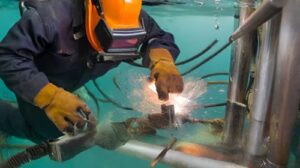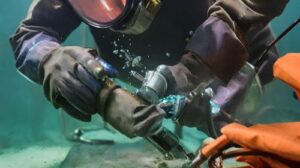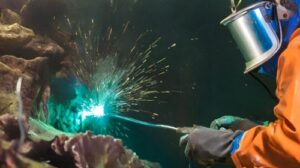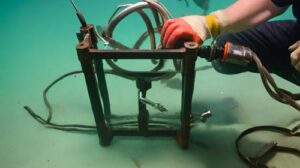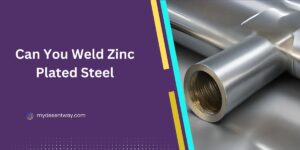Table of Contents
- How Underwater Welding Works
- Types of Underwater Welding
- Mechanics Behind Underwater Welding
- Operational Procedures
- Risk and Safety Considerations
- Bubbles and Visibility
- Balancing Risks and Rewards
- Evaluating Risks Against Benefits
- Professional Growth and Challenges
- Ethical and Professional Responsibility
- Conclusion
- FAQs about How does underwater welding work
- What are the primary methods of underwater welding?
- What challenges are faced in underwater welding
- How do welders ensure safety during underwater welding?
- What industries employ underwater welders?
- How deep can underwater welders work?
A remarkable fusion of skill and technology emerges from underwater welding in the enigmatic world beneath the waves. This article delves into the depths of this fascinating craft, exploring the methods, risks, and innovations that define how does underwater welding work.
Join us as we navigate the challenges, innovations, and remarkable individuals shaping this specialized and compelling realm of welding beneath the waves.
How Underwater Welding Works
Defining Underwater Welding
Underwater welding is a specialized technique crucial in repairing structures immersed in water, such as pipelines, ships, and oil rigs. It merges welding expertise with underwater diving skills, enabling repairs and construction in aquatic environments that would otherwise be inaccessible.
This process demands a unique set of skills from welders. They must be proficient in welding and underwater diving, making this field highly specialized and demanding.
Contrasting Underwater vs. Land-based Welding
While land-based welding primarily occurs in controlled environments, underwater welding faces unique challenges. The aquatic environment introduces hydrostatic pressure, limited visibility, and varying temperatures, significantly influencing welding processes.
One key difference lies in the application of welding techniques. Wet welding, conducted directly in water, requires electrodes that can function in a wet environment. Dry welding involves creating a sealed environment to conduct welding in a dry chamber beneath the water’s surface.
Underwater welding also demands meticulous planning due to safety concerns, making it distinct from land-based welding practices.
Types of Underwater Welding
Wet Welding
Wet welding involves performing welding operations directly underwater. It’s a common technique used for various underwater repairs and constructions. The process uses specially designed electrodes that operate effectively in a wet environment.
The electrodes used in wet welding are typically coated with materials that create a protective gas shield around the welding area, preventing water from interfering with the welding process. Welders conducting wet welding must be skilled in working underwater and managing the challenges posed by reduced visibility and water currents.
Dry Welding Techniques
Dry welding encompasses various methods that involve creating a dry environment to conduct welding beneath the water’s surface.
Habitat Welding
This technique involves creating an enclosed environment or habitat around the area to be welded. It allows welders to work in a dry atmosphere, similar to land-based welding conditions. The habitat is pressurized to keep water out, providing a controlled environment for welding.
Pressure and Dry Chamber Welding
Pressure and dry chamber welding involves creating a sealed space underwater using specialized chambers or enclosures. Welders enter this chamber, which is pressurized to keep water out, enabling them to conduct welding in a dry environment.
These dry welding techniques offer improved control over environmental conditions, allowing for more precise and reliable welding than wet welding.
Mechanics Behind Underwater Welding
Process Breakdown: Hyperbaric/Dry Welding
Hyperbaric or dry welding involves welding in a sealed, dry environment underwater. The process is conducted within a hyperbaric chamber or a specially constructed enclosure. This method ensures that welders work in conditions similar to land, with controlled atmospheres and minimal water interference.
Welding Inside a Hyperbaric Chamber
The hyperbaric chamber maintains internal pressure to keep water out. Welders enter this chamber and conduct welding operations, benefiting from an environment free from water intrusion, allowing for more accurate and controlled welds.
Impact of Trapped Air
Trapped air within the welding environment can pose risks due to decompression sickness or the bends. Managing air pressure and ensuring proper decompression protocols are crucial to prevent health hazards to welders.
Role of Habitats
Habitats, like those used in dry welding, are crucial in hyperbaric welding, too. They provide a controlled environment where welders can work effectively, ensuring safety and precision in their welding tasks.
Wet Welding Under the Microscope
In wet welding, the process operates differently due to the direct exposure to water. Understanding the behavior of electrons in this environment is essential. The electrodes are designed to create a gas shield around the weld, preventing water from interfering with the welding process.
Understanding Electron Dynamics
Electron dynamics in wet welding play a vital role in maintaining the integrity of the weld. The shielding effect produced by the electrode ensures that the welding arc remains stable despite the surrounding water, allowing for effective welding.
Equipment and Circuit Process Explained
Wet welding equipment includes specially designed electrodes, power sources, and welding machines adapted to operate underwater. The circuit process involves managing electrical currents underwater to facilitate effective welding.
Operational Procedures
How Underwater Welding is Executed
Underwater welding encompasses various techniques and methods for different underwater environments and repair needs. Here are some common operational procedures:
Flux-Cored Arc Welding
This technique involves using a continuous tubular electrode filled with flux. The flux shields the weld pool from contaminants, improving the weld quality underwater.
Friction, Gas Tungsten, Gas Metal, and Plasma Arc Welding
These methods offer alternative approaches to underwater welding, each with its advantages. Friction welding utilizes the heat generated from friction to join materials. In contrast, gas tungsten, gas metal, and plasma arc welding rely on different types of arcs to melt and join metals underwater.
Challenges and Considerations
Welders must navigate challenges unique to underwater environments, such as limited visibility, fluctuating temperatures, and currents. These factors impact the precision and quality of welding, necessitating specialized training and expertise.
Safety Protocols
Underwater welding demands strict adherence to safety protocols. Welders undergo extensive training in dive safety, welding procedures, and emergency response. Ensuring proper equipment maintenance and understanding decompression sickness risks are critical for a safe working environment.
Skill and Expertise
Proficiency in both welding techniques and underwater diving is essential. Welders undergo rigorous training to handle the complexities of underwater welding, mastering the intricacies of welding in challenging aquatic conditions.
Risk and Safety Considerations
Underwater Welding Risks
Working underwater introduces a range of hazards that pose risks to welders:
Diving Risks
Underwater welding combines welding skills with diving expertise, exposing welders to the inherent dangers of underwater diving, such as decompression sickness, nitrogen narcosis, and barotrauma.
Environmental Challenges
Factors like poor visibility, unpredictable currents, and extreme temperatures add complexity to welding tasks, increasing the likelihood of accidents or errors during operations.
Electrical Hazards
Underwater welding involves handling electrical equipment in a conductive environment, amplifying the risk of electrical shocks or burns.
Importance of Safety Protocols
To mitigate these risks, strict adherence to safety protocols is imperative:
Extensive Training
Welders undergo rigorous training in both diving and welding techniques. This includes understanding dive physics, recognizing decompression sickness symptoms, and mastering emergency procedures.
Equipment Maintenance
Regular maintenance, diving, and welding gear inspection are essential to ensure optimal performance and mitigate equipment-related risks.
Decompression Procedures
Welders follow specific decompression schedules to prevent decompression sickness, carefully managing ascent rates and dive times to allow the safe release of dissolved gases.
Safety Measures and Precautions
Safety measures like standby divers, continuous dive condition monitoring, and proper emergency response protocols significantly enhance underwater welding operations’ safety.
Bubbles and Visibility
Significance of Bubbles in Welding
Bubbles play a pivotal role in underwater welding, impacting both the process and visibility:
Gas Shielding
The electrode generates a gas shield around the arc in wet welding, creating a protective bubble. This bubble shields the weld pool from water interference, ensuring a stable arc for effective welding.
Impact on Welding Visibility
While bubbles shield the welding area, they can also obstruct visibility. The release of gases and water movement around the weld zone can create a hazy environment, challenging welders by limiting their sight.
Mitigating Visibility Issues
Welders employ various techniques to enhance visibility:
Lighting Systems
Powerful underwater lighting systems help illuminate the welding area, improving visibility and enabling welders to work more effectively.
Bubble Management
Controlling the release and movement of bubbles around the welding zone through precise electrode positioning and adjusting welding parameters can minimize visibility challenges.
Balancing Bubbles and Weld Quality
Maintaining an optimal balance between gas shielding and visibility is crucial. Welders must navigate this balance to ensure the quality and integrity of the weld while working within the constraints of reduced visibility underwater.
Balancing Risks and Rewards
Evaluating Risks Against Benefits
Underwater welding presents a unique balance between risks and rewards:
Risks Involved
The risks associated with underwater welding, including diving hazards, environmental challenges, and electrical risks, demand meticulous attention to safety protocols and specialized training. These risks underscore the demanding nature of this profession.
Rewards in the Field
Despite the challenges, underwater welding offers significant rewards:
- Specialized Expertise: Welders gain specialized welding and underwater diving skills, making them highly sought after in niche industries.
- Lucrative Opportunities: The specialized nature of underwater welding often translates into higher earning potential for skilled professionals.
- Contribution to Critical Repairs: Underwater welders are crucial in maintaining and repairing vital underwater structures like pipelines, offshore platforms, and ships, contributing to infrastructure integrity.
Professional Growth and Challenges
Underwater welding demands continuous learning and adaptation:
- Ongoing Training: Keeping abreast of technological advancements and safety protocols is imperative, driving continuous professional development.
- Mental and Physical Stamina: The demanding nature of the job requires both physical endurance and mental resilience to navigate challenging underwater conditions.
Ethical and Professional Responsibility
Welders in this field hold a significant responsibility:
Adherence to Safety
Prioritizing safety protocols isn’t just a professional requirement; it’s an ethical responsibility to ensure the well-being of oneself and fellow workers.
Environmental Impact
Maintaining high standards in welding practices is crucial not only for the integrity of structures but also for minimizing environmental impact and preserving aquatic ecosystems.
Conclusion
In the intricate world below the surface, the art of underwater welding unfolds as a blend of expertise and innovation. As we conclude this exploration into how does underwater welding work. This specialized craft marries technical prowess with adaptability to conquer the challenges beneath the waves.
From sealed chambers to navigating currents, underwater welders showcase a unique blend of skill and courage. Their dedication ensures the integrity of vital underwater structures, marking their place as pioneers in an extraordinary realm where precision meets the depths.
FAQs about How does underwater welding work
What are the primary methods of underwater welding?
The two main methods are wet welding, which is conducted directly in water using specially coated electrodes, and dry welding, which involves creating sealed chambers or habitats for welding in a dry environment beneath the water’s surface.
What challenges are faced in underwater welding
Underwater welders contend with limited visibility, fluctuating temperatures, currents, and the inherent risks of working underwater, including electrical hazards and decompression sickness.
How do welders ensure safety during underwater welding?
Strict adherence to safety protocols, extensive training in dive safety and welding procedures, equipment maintenance, and careful management of decompression schedules are crucial for ensuring safety in underwater welding.
What industries employ underwater welders?
Industries like offshore construction, ship repair, underwater pipeline maintenance, and oil rig repairs commonly employ underwater welders due to their expertise in welding below the water’s surface.
How deep can underwater welders work?
With proper training and equipment, underwater welders can work at various depths, ranging from a few meters to hundreds of meters deep, depending on the specific circumstances and certifications.

